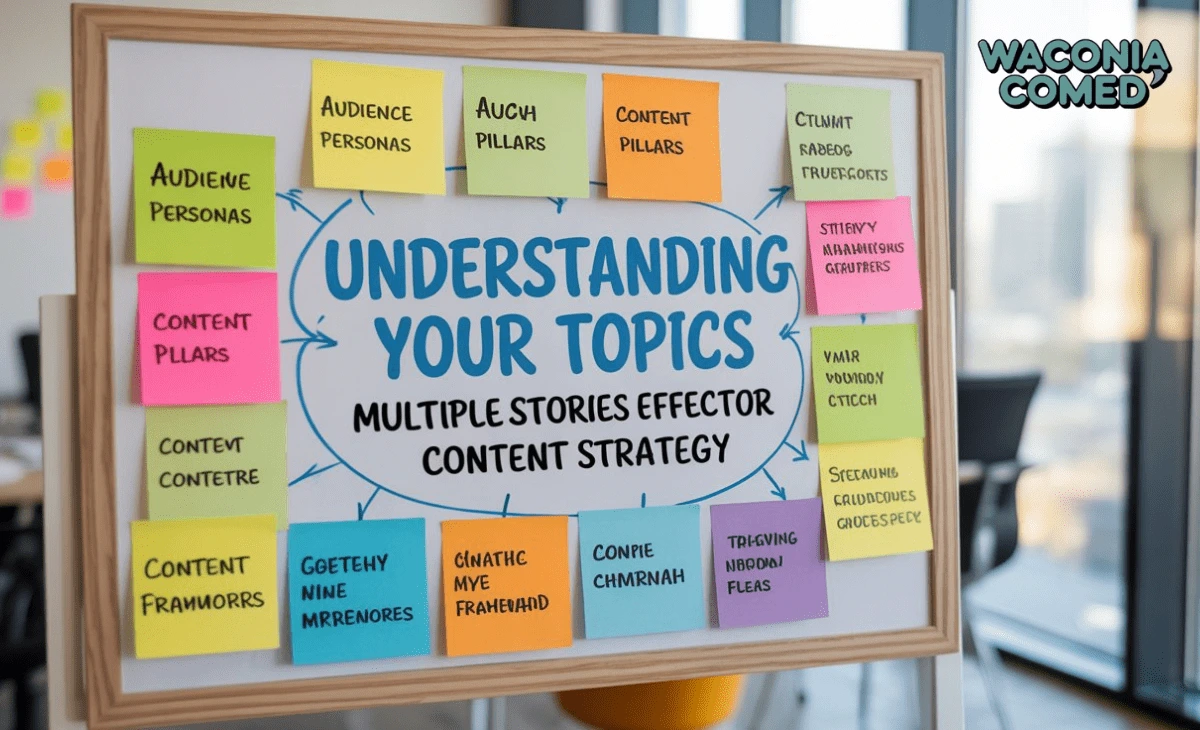In today’s content-driven digital world, audiences crave more than just surface-level information. They want depth, relevance, and connection. The concept of your topics multiple stories addresses this growing need by encouraging content creators, marketers, and businesses to explore diverse narratives within a single topic. This approach doesn’t just improve storytelling it transforms the way you connect with your audience and boosts your SEO performance.
Whether you’re a blogger, brand strategist, SEO expert, or content creator, understanding how to craft and present multiple stories under one core topic can elevate your visibility, authority, and engagement. Let’s explore how this concept works and how you can implement it effectively.
What Does “Your Topics Multiple Stories” Mean?
At its core, your topic’s multiple stories are a content strategy approach that involves uncovering different angles, sub-narratives, or experiences within a single core topic. Rather than limiting your content to a single perspective, this technique allows for a multidimensional exploration of the subject.
For example, if your main topic is “remote work,” multiple stories might include:
- The employee’s perspective on work-life balance
- The employer’s view on productivity
- Tools and technologies enabling remote success
- Mental health implications
- Case studies from successful remote teams
Each of these stories forms a piece of the larger puzzle, making your content richer, more valuable, and more engaging.
Why Exploring Multiple Stories Matters
Using your topics multiple stories under one topic isn’t just about content length, it’s about value creation, SEO enhancement, and audience engagement. Here’s why this approach is effective:
Deepens Audience Connection
Readers want to feel seen and understood. When your content reflects different perspectives, experiences, or questions, it resonates with a wider audience.
Enhances Topical Authority
Covering a topic from various angles signals to search engines that you’re a subject matter expert. This improves your domain’s authority and helps you rank for more related keywords.
Supports SEO Clustering
Multiple stories allow for internal linking between related content, strengthening topical clusters, a critical element in Google’s Helpful Content and EEAT guidelines.
Promotes Shareability and Engagement
Different audience segments will resonate with different stories. This increases the likelihood of shares, comments, and longer time-on-page all positive SEO signals.
Benefits of Using the “your topics multiple stories” Strategy
Integrating this storytelling method into your content plan offers a wide range of benefits:
- Higher engagement: More relevant touchpoints mean higher interest and interaction.
- Improved dwell time: Users stay longer when there’s a variety of valuable content to explore.
- SEO growth: Broader keyword coverage across long-tail queries.
- Repurposing potential: Each sub-story can evolve into its own blog post, video, or social snippet.
- Increased trust: When you reflect multiple viewpoints, your content appears more balanced and trustworthy.
Common Challenges and How to Overcome Them
While the benefits are significant, creators may face several hurdles when applying this approach. Here’s how to tackle them:
Content Overwhelm
Challenge: Too many storylines can overwhelm the writer or confuse the audience.
Solution: Start with a clear content outline that breaks the main topic into manageable subtopics. Use clear headings to guide the reader.
Lack of Cohesion
Challenge: The content may feel disjointed.
Solution: Ensure each story connects back to the core theme. Use transitional language and anchor phrases to maintain flow.
SEO Dilution
Challenge: Spreading your topics multiple stories across too many pages can dilute SEO power.
Solution: Create topic clusters with pillar pages supported by detailed internal links.
Real-World Examples of This Strategy
Many successful digital platforms and creators use multi-story strategies:
- HubSpot (Marketing Education)
Their blogs don’t just talk about “content marketing.” They tell stories about strategy, case studies, tools, team workflows, and campaign analytics all under one content umbrella. - National Geographic (Visual Journalism)
Each issue or article tackles a central theme (e.g., climate change) through photos, expert interviews, cultural impact, and scientific data illustrating the power of multi-layered storytelling. - Neil Patel’s SEO Blog
Instead of one post on “SEO tools,” you’ll find stories on beginner vs. expert tools, tools for technical SEO, and user case results showing how multi-story angles build authority and traffic.
Step-by-Step Guide to Crafting Multiple Stories Around Your Topic
You don’t need to be a seasoned journalist to use this method. Here’s a practical guide:
1: Define Your Core Topic
Choose a central theme that aligns with your brand, niche, or audience interest e.g., “Sustainable Fashion.”
2: Brainstorm Sub-Stories
Use these questions to identify multiple angles:
- Who are the stakeholders?
- What are the historical, technical, or emotional dimensions?
- Are there tools, trends, or case studies to explore?
3: Create a Content Map
Organize your sub-stories into a logical flow. Think of this as your storytelling framework.
4: Optimize for SEO
Assign unique, intent-driven keywords to each story while keeping internal links to the main pillar content.
5: Write with Authenticity
Incorporate real-life examples, expert insights, and human experiences. This fulfills Google’s EEAT guidelines and builds reader trust.
6: Use Visuals Strategically
Charts, infographics, and photos can support different stories and break up dense text. Tools like Canva, Infogram, and Google Charts are great for your topics multiple stories.
Tools to Support Story-Rich Content Development
- AnswerThePublic for generating diverse user questions
- SurferSEO or Clearscope to optimize each subtopic for SEO
- Notion or Trello – For content mapping and planning
- Grammarly + Hemingway Editor – To ensure clarity and readability
FAQs About Your Topics Multiple Stories
What does “your topic’s multiple stories” mean in content marketing?
It refers to a strategy where a single topic is explored through several sub-narratives or perspectives to offer comprehensive, engaging, and SEO-friendly content.
Is using multiple stories good for SEO?
Yes. It improves keyword coverage, topical depth, and internal linking all of which are critical for search rankings.
How many sub-stories should I include in a blog post?
There’s no fixed number, but 3–5 well-developed sub-stories work best for engagement and readability.
Can this method work for short-form content too?
Absolutely. Each sub-story can be repurposed as a social media post, email newsletter, or video clip.
What industries benefit most from this approach?
All industries can use it from education, tech, and marketing to health, travel, and journalism.
Conclusion
In an online world flooded with generic content, your topics multiple stories offer a powerful way to stand out. By diving deep into a topic and exploring its many dimensions, you don’t just inform yourself, connect, inspire, and convert.
Whether you’re building a blog, running a brand, or crafting content for clients, this strategy fosters authority, engagement, and authenticity. It’s time to move beyond one-dimensional posts and start telling stories that resonate from every angle.

